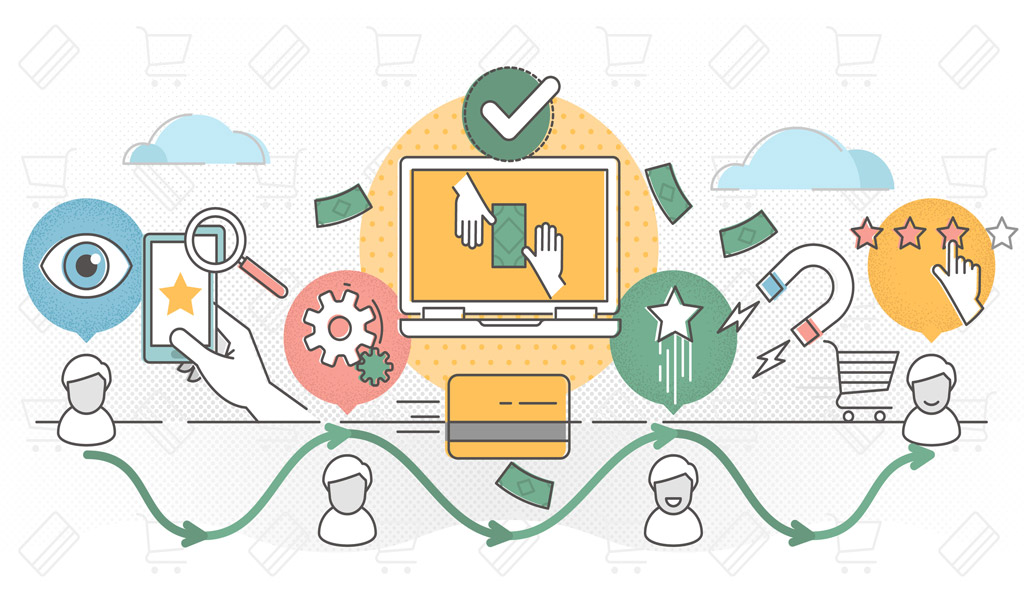Customer Reference Program. If you work in business, then you might feel like there’s an endless stream of programs to get stuck into. Knowing where you put your time and energy can be daunting. Which programs deserve your attention? And should you start a customer reference program? The answer is yes, and we’re going to tell you why.
A customer reference is a story or set of stories told by your customers that highlight what is great about your company. When you create a customer reference program, you are essentially creating a list of customers who you can rely on to tell their stories. These stories can be important for various situations, for example, if you need to point a journalist in the direction of someone who has helped. But why exactly do you need a customer reference program? How does it help shape your business for the better? And how do you build one?
Why You Need a Customer Reference Program
The Key to Success Lies in the Details
No business can thrive without the support of its customers. This might be intuitive, but a customer reference program aims to take this to the next level. Most of the time, we only know how customers feel about our business through faceless sales figures of brief customer surveys. This data can tell us a lot, but it’s not always comprehensive or specific. Sometimes it’s better to know why one (or a few) customers love your business and understand these customers in great detail.
If you delve heavily into the details of how one customer uses your product and exactly how it solves problems for them, you can start to unlock how your wider customer base perceives your product. The issue with general feedback is that it’s too broad. Customers might love one aspect of your product, or hate one aspect, but what about everything in between? What about that one feature in your software that never quite works as expected but isn’t used very often? How do your customers feel about that feature? Do they wish it worked better but never took the time to tell you? Maybe. This is just one example of how you can start to uncover more things about your product and start to make it work for everyone, all the time.
You Need Advocates
Advocates or brand promoters are a great asset to your business. They essentially market your product for you, and they do it for free. Your brand promoters can have an incredibly powerful effect on your revenue, so they should never be underestimated.
However, while having brand promoters is good, it’s even better if you know how to access them whenever you want. Sometimes you need to ask a customer a question about your product and get quick, honest, and thorough feedback. With a customer reference program, you always have a customer on hand to reach out to. The same is true if you need a customer to write a testimonial or a customer success story. You will always have a valuable resource (your loyal customers) to tap into.
You might also find yourself in a position where a journalist or someone from the press wants a comment from one of your customers. They will go one of two routes here. They might ask your customers directly by reaching out on social media and asking for a comment. Or they might ask whether you have a customer you can direct them to. By having a customer reference program, you have greater control over the situation. You can point them in the direction of a customer that you know thinks highly of your company and someone who you trust to give an honest, fair, and favorable answer. They are your advocate!

How to Create a Powerful Customer Reference Program in 7 Tips
This section isn’t a guide but rather a collection of expert tips on a robust customer reference program’s essential ingredients. Let’s take a look.
1. Make Connections
You’ll never have a thriving customer reference program if you can’t effectively connect with your customers. The biggest hurdle you need to jump is getting willing customers. To get customers who are eager to be your advocates, you first need to create a great product. Then you need to offer a consistently great experience. And lastly, you need to make emotional connections with your customers. Customers only want to become references if they feel passionate about your product and your brand. Without this magic ingredient, your program will fall flat. So, how do you make connections?
If you’re just starting to make connections now, it’s probably too early for you to start a customer reference program. Why? Because creating emotional relationships with your customers takes time. It’s not something that happens overnight. Here are some tips on making connections with customers.
Always be available
You should make sure that you’re always available to talk to your customers and offer multiple communication channels like phone, email, live chat, and chatbots. Chatbots are excellent at bridging communication gaps and propelling you into a 24/7 business. Sure, chatbots might not make your customers emotionally connect with you directly, but indirectly, this is precisely what they do. They present this image of your company as a company that will always be there to answer their questions, who takes customer service seriously, and who wants to engage actively. It shows that you care about speed and convenience and solving your customer issues at a time that’s good for them.
Be Authentic and Genuine
Communicating with your customers on social media should never feel like ticking a box. It has to feel authentic and natural. You do this by asking questions that are important to your customers and actively responding and engaging with them. You want to come across as relatable and real. Like you also use your products and get value from them. If your customers perceive you as real and genuine, they are more likely to engage with you honestly and do it more often.
Practice Empathy
Companies who are empathetic always score more emotional wins with customers than those who don’t. You show empathy by demonstrating that you understand your customer’s frustrations, and you’re willing to listen to them.
2. Make it Fun and Simple
A customer reference program is an excellent asset to your business, but you have to balance its value with the labor your participants have to put in. Many companies make the mistake of making their customer reference program hard work for their customers. They create complicated documents that are pages and pages long. They might suggest a multitude of rules or try to but an unnecessary workload onto the participants. For example, let’s say you approach a customer who is a member of your customer reference program to write a testimonial for you. It would be unwise to send them a style guide and say, “this is the style guide we use for our company, so please write in this style.” We’re not all writers, and you can’t expect your customer to go through their testimonial with a fine-toothed comb looking for style inconsistencies. This is something for you to do in-house.
3. Thank Them
Remember, they’re doing you a favor by being your reference, so they deserve to be thanked. You shouldn’t send canned emails but rather manage them like you would an account. They add immense value to your business, so they should get personalized communications and be offered an open line of communication.
4. Attract Customers From Different Segments
It’s a good idea to have customer references from different parts of your customer base. Not all customers love your product for the same reason. There might be some overlap in what customers like, but it’s also true that we all use products differently and fix different problems for us. You’ll discover this when you conduct your customer research and create your segments. If you can, you should attract at least one customer reference for each segment. That way, you always have someone to approach when you have a question specific to how that segment uses your product.

5. Evaluate and Revise
Just because you’ve already created a customer reference program doesn’t mean it’s set in stone. It’s important to collect feedback for your program, both internally and externally. Ask the customers who are in your program what they think of it. It would help if you asked them questions like:
- How did you find the onboarding process?
- Are you comfortable with the level of communication you have with the company?
- Do you enjoy being part of the program? If so, why?
- Is there anything you’re uncomfortable with or think takes up too much of your time?
- If you could change something about the program, what would it be?
Internally, you should ask for feedback from different teams around the business. It’s critical that your marketing and communications teams are actively engaged every step of the way. They can help you craft your communications and marketing material in a way that will resonate with those in the program.
6. Align References With Business Objectives
A key part of having a customer reference strategy is knowing what you want to gain from your strategy. You should always be thinking proactively rather than reactively. Sure, customer reference programs do help with reacting. They give you the means to react effectively when you are approached by journalists or want specific answers to questions that currently act as roadblocks.
But customer references also have a proactive function, and this is where and why you should align them with your business objectives. For example, let’s say you’re actively targeting a new customer segment: students. To position your brand as student-friendly and one that fixes problems that students frequently face, you need a student advocate. It would help if you had a testimonial from a student so that potential customers can see how you help people like them.
7. Find Your Evangelists and Manage Them Carefully
Customer references are often thought of as reactive. They are there for you when you need someone to take a call or write a case study, but otherwise, they might stay silent. By contrast, your evangelists are your outspoken advocates who will be proactive in promoting and defending your company. Evangelists can also be customer references, and it’s a great idea to engage them, but it’s essential to understand the difference between references and evangelists and treat them differently. Your evangelists might enjoy attending your events or answering more emotive questions than your typical references. They are great at converting your skeptics to loyal customers. However, they can also seem less impartial, so you might want to opt for a reference rather than an evangelist if you need a quote for a journalist.




















